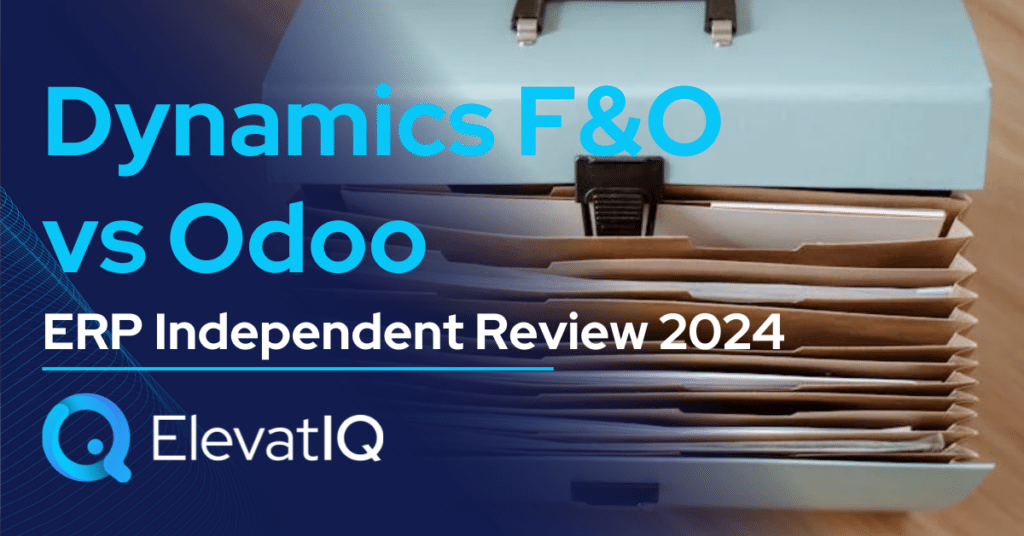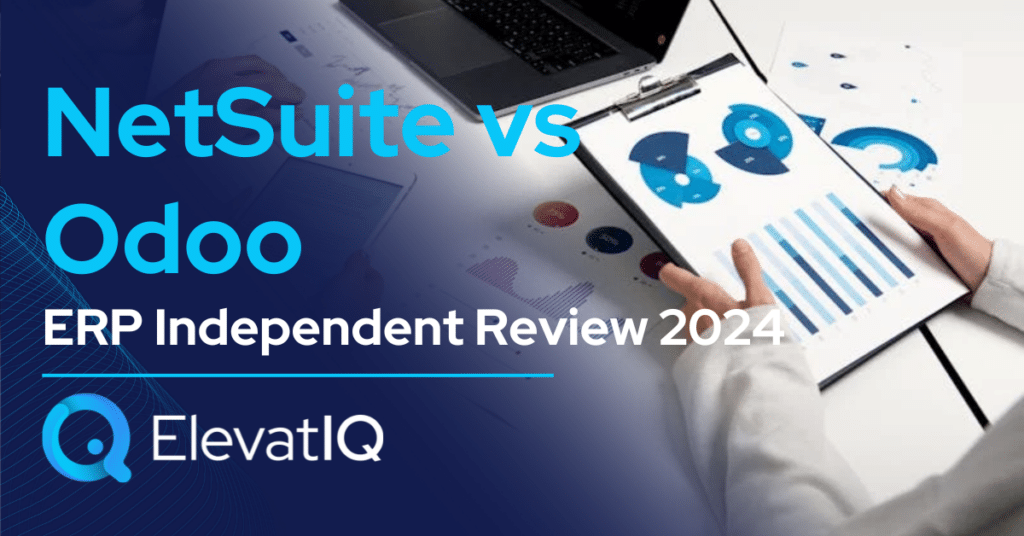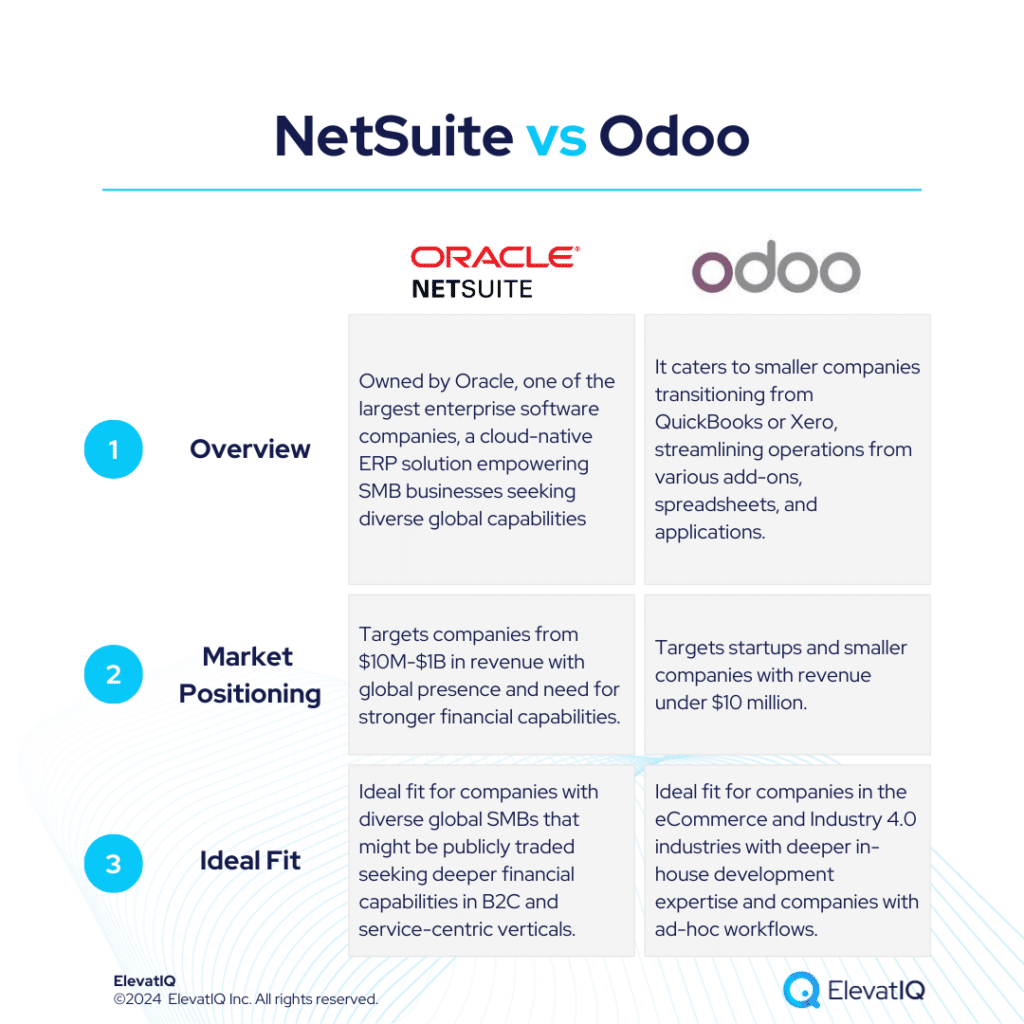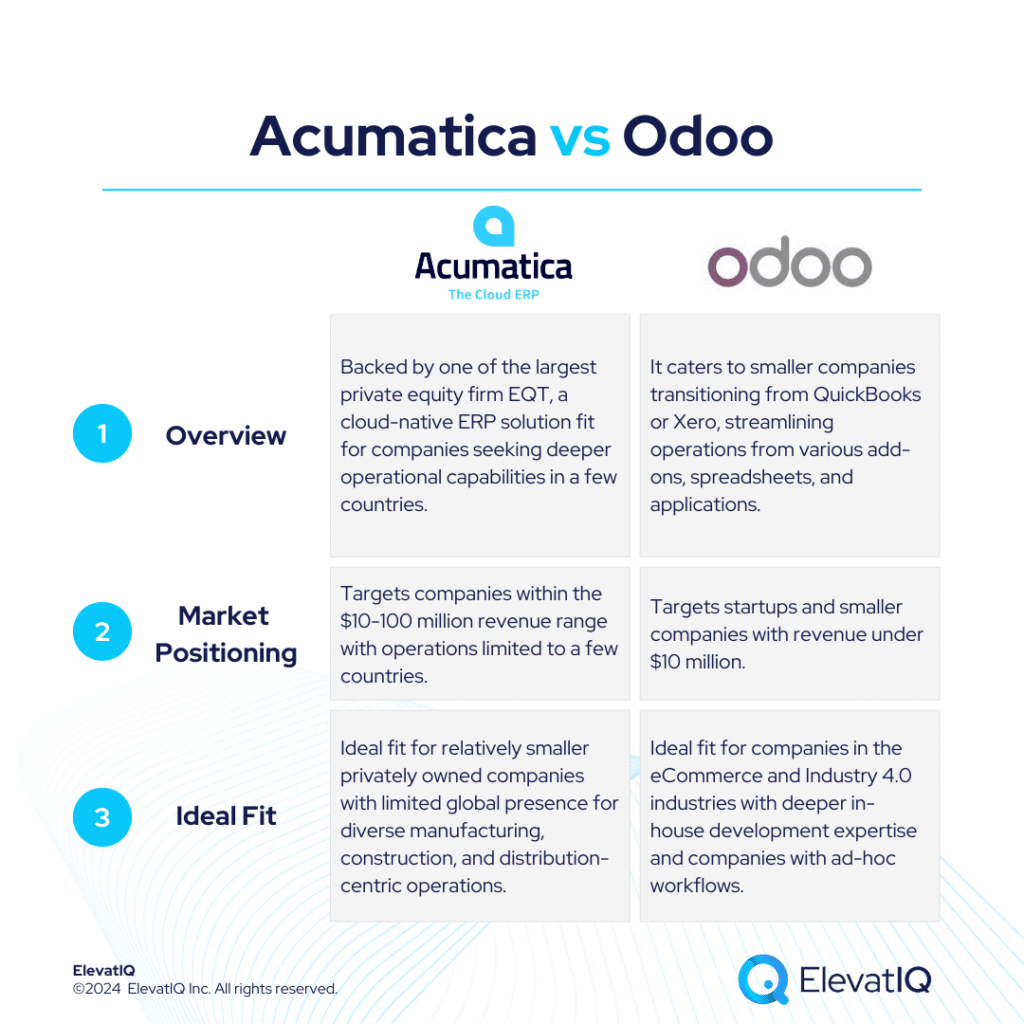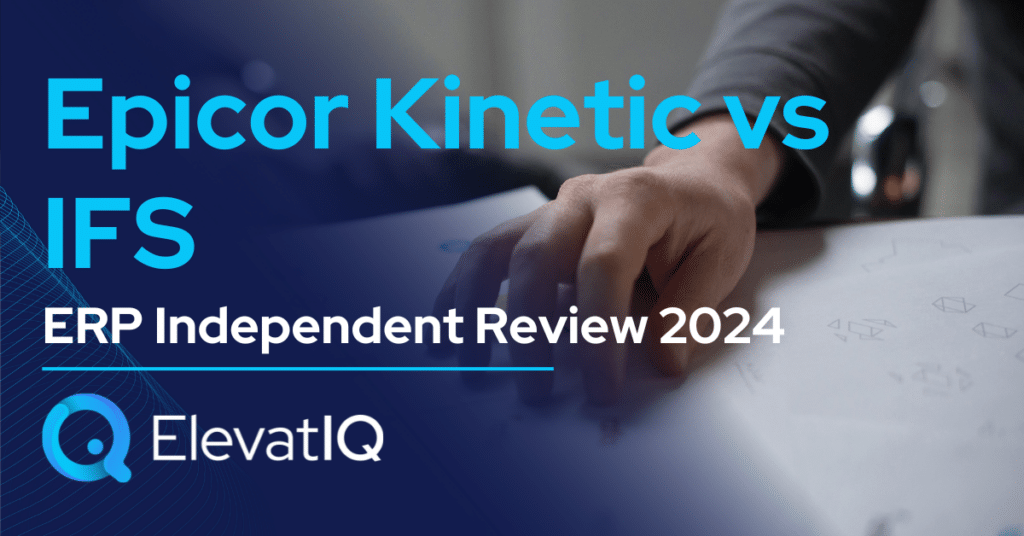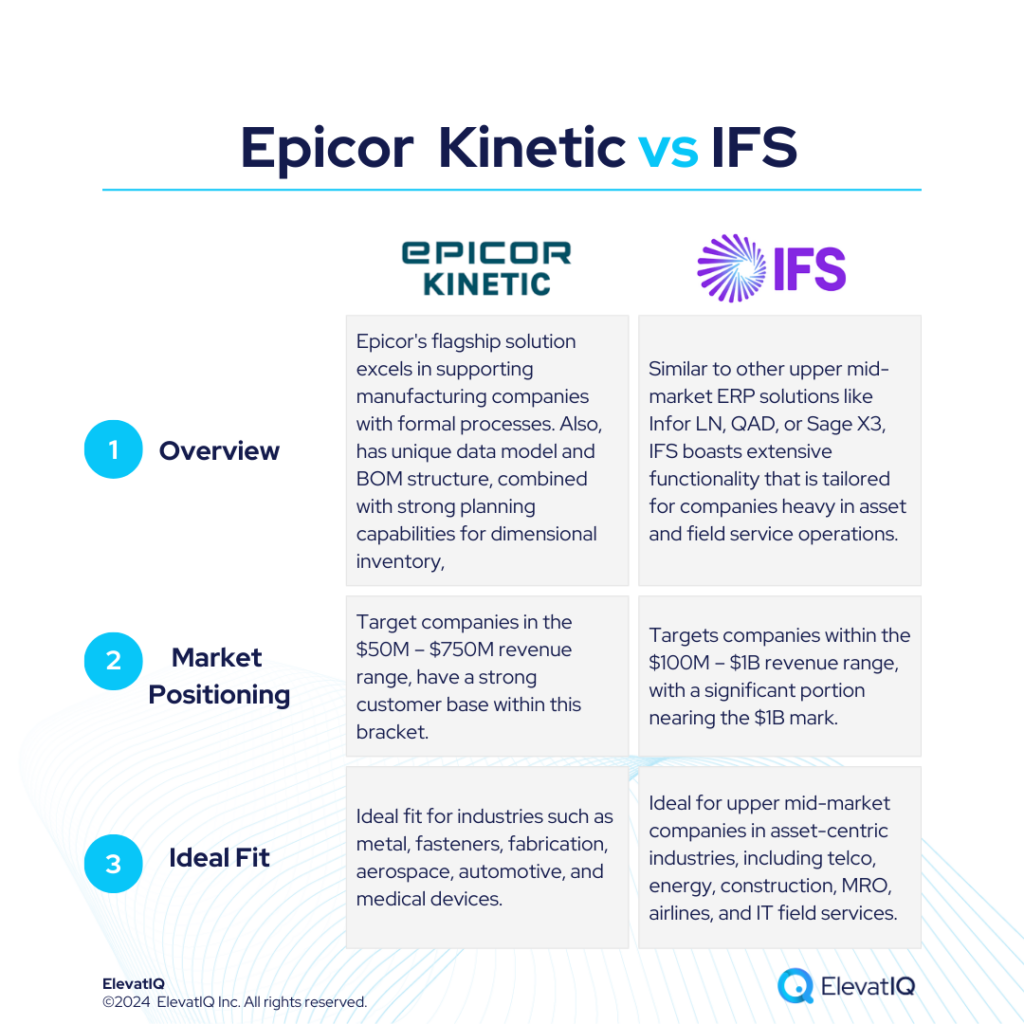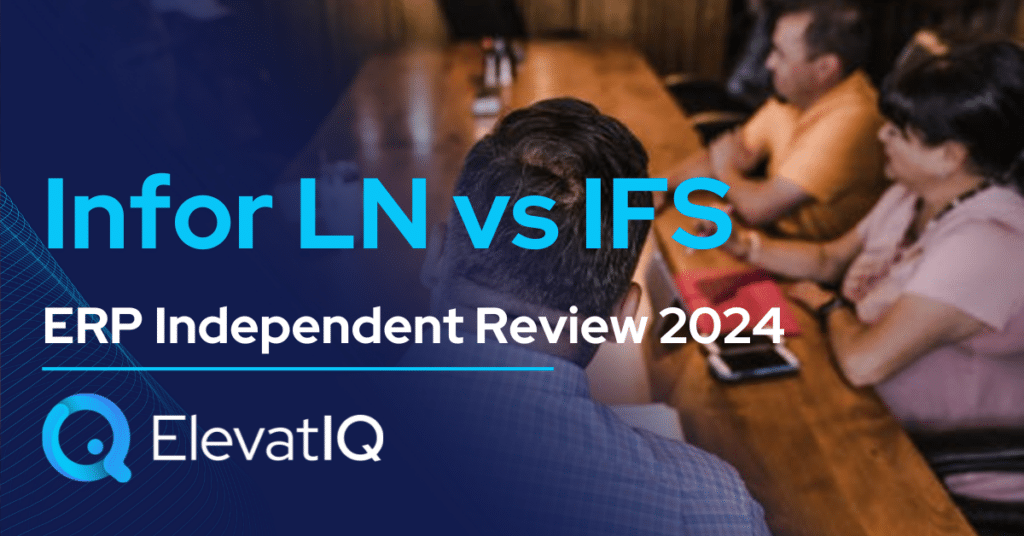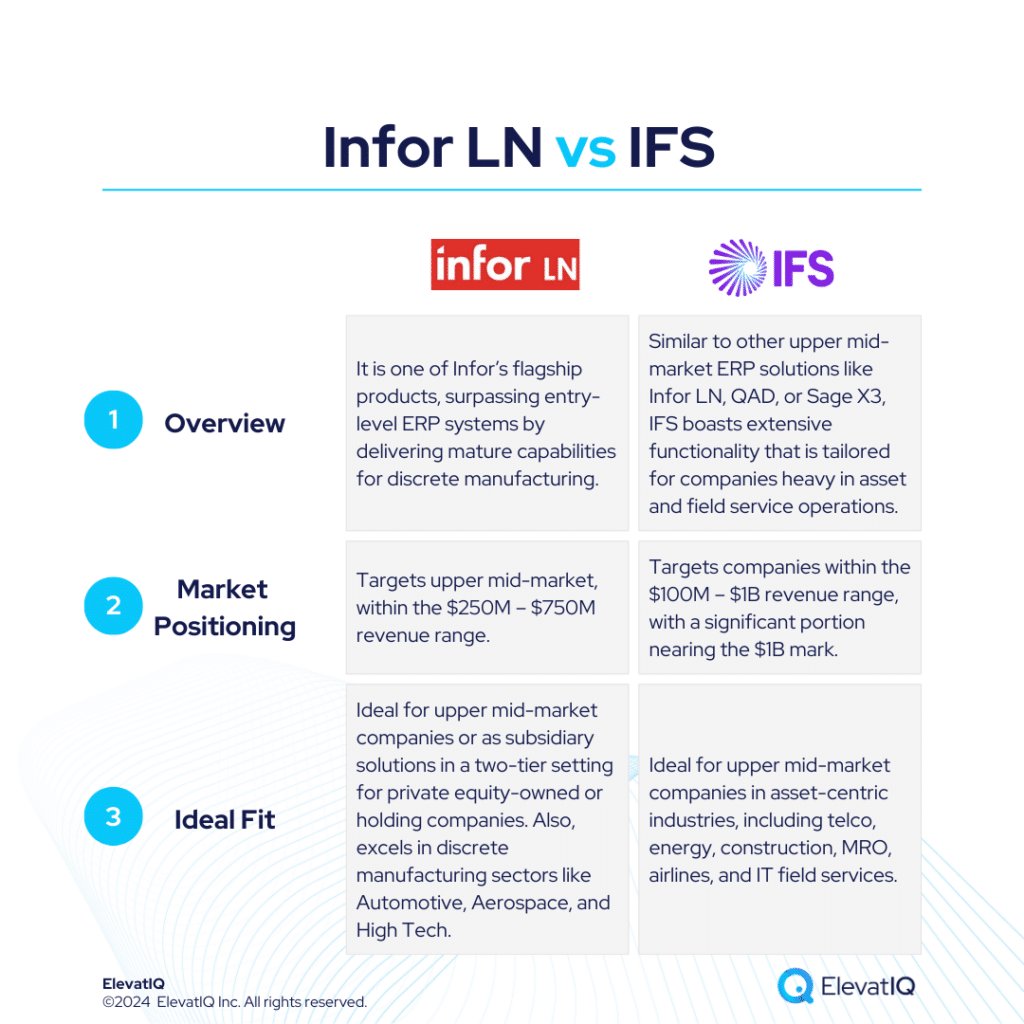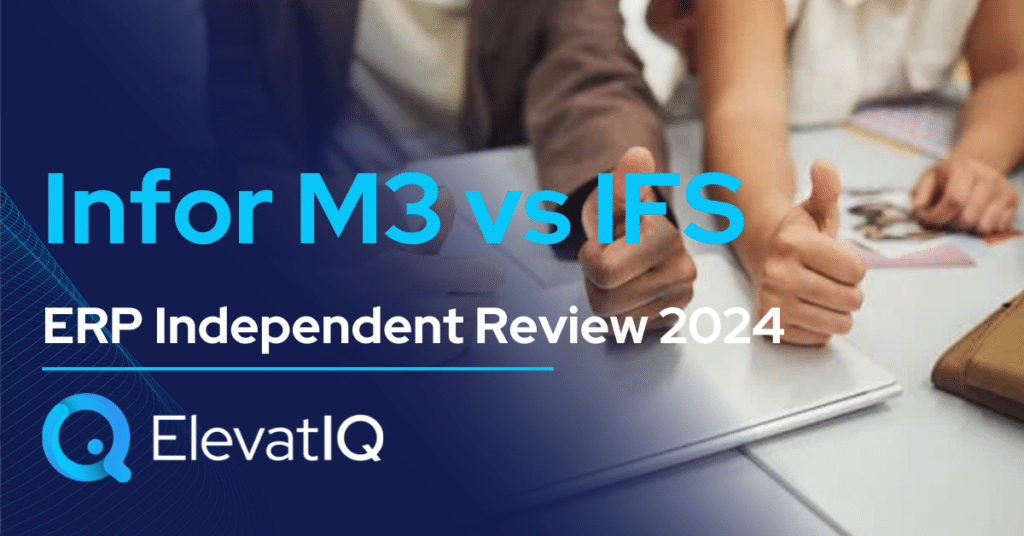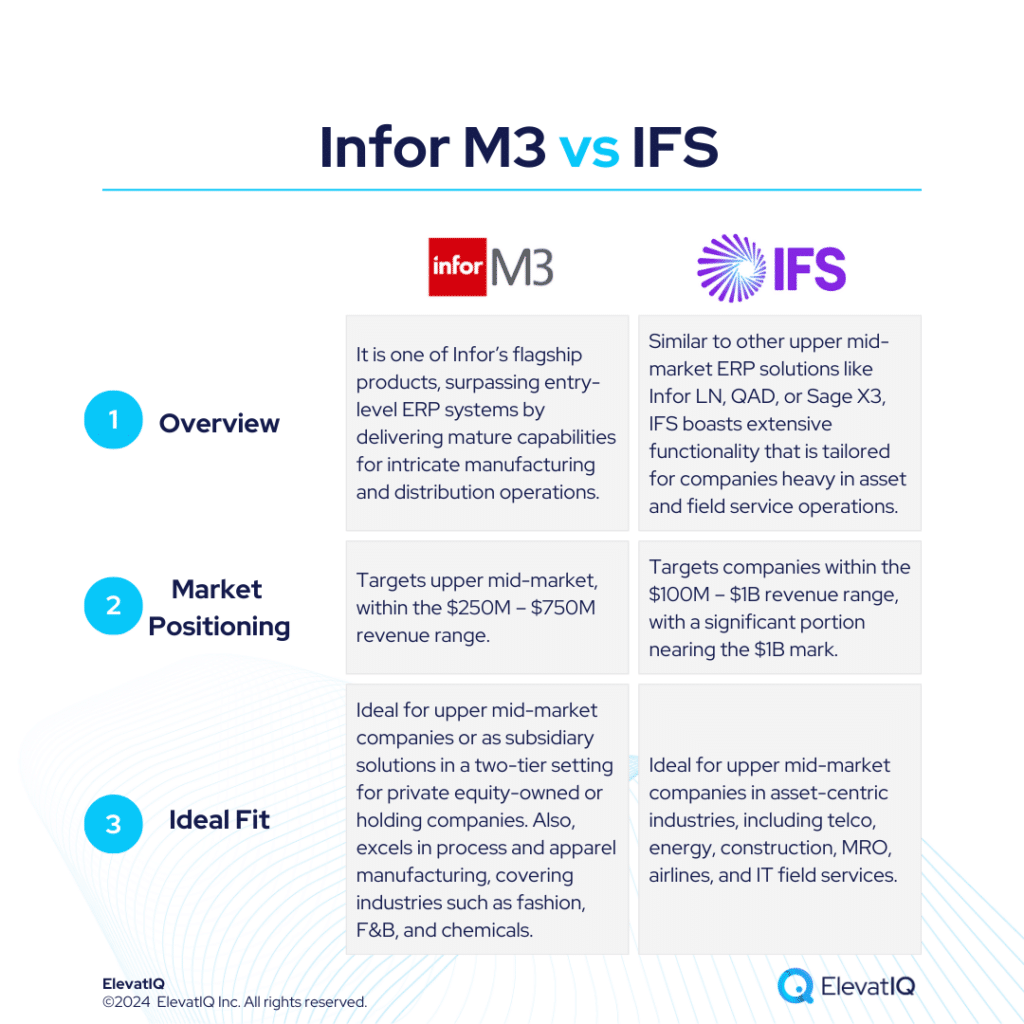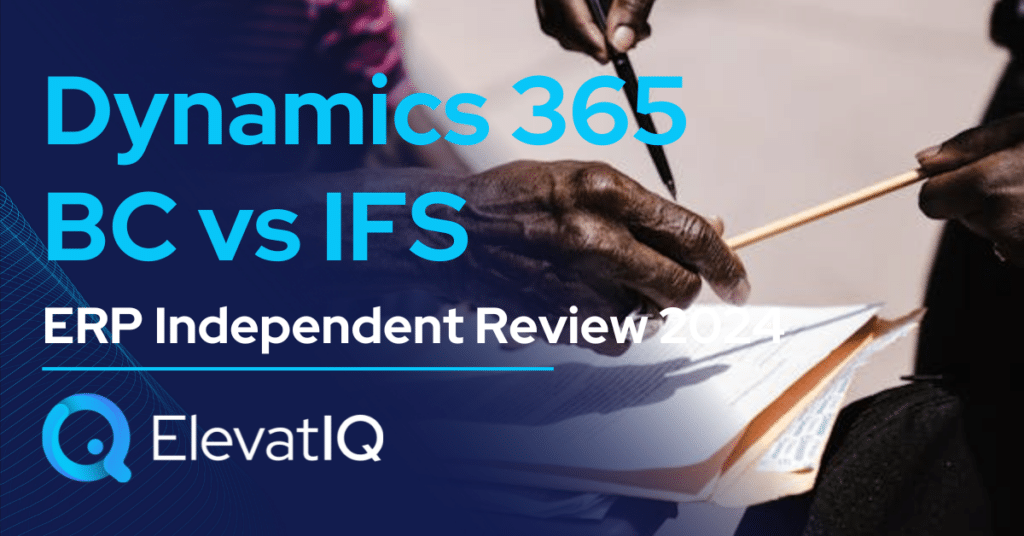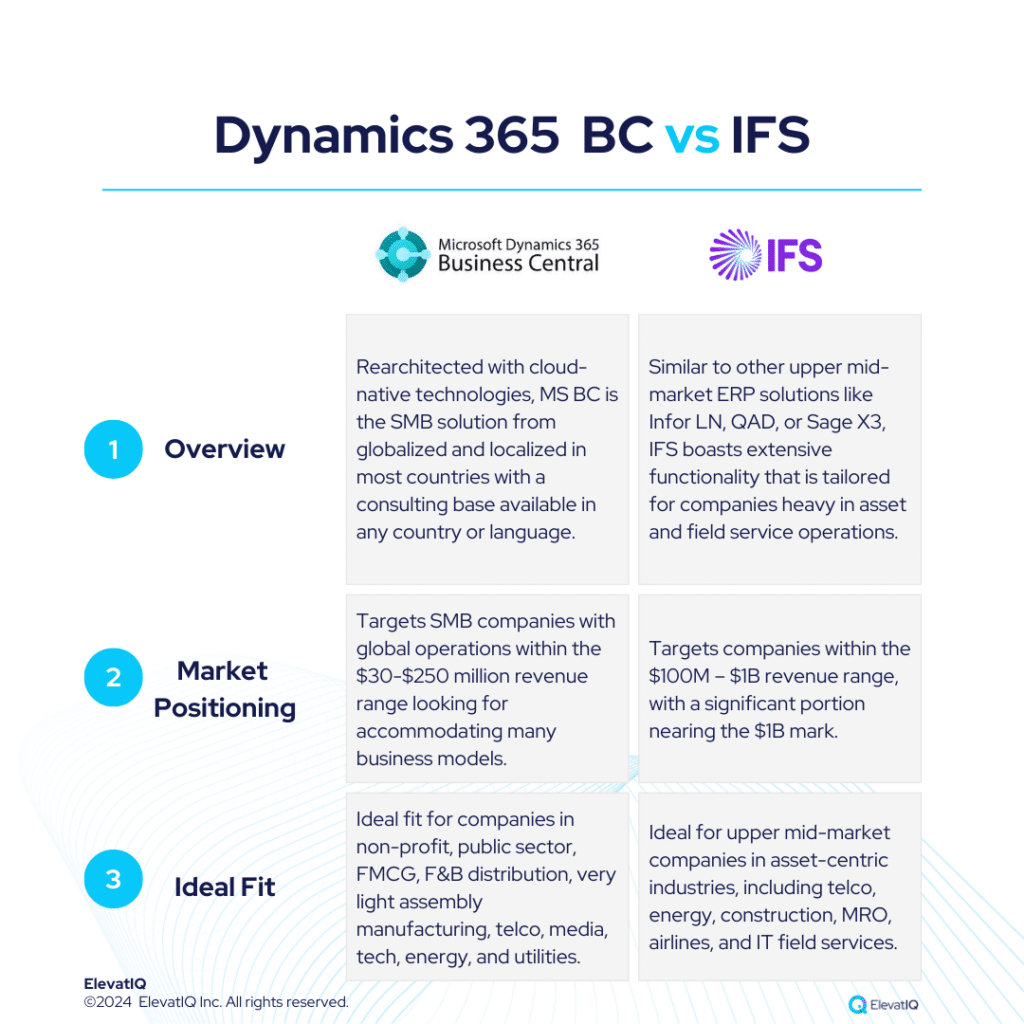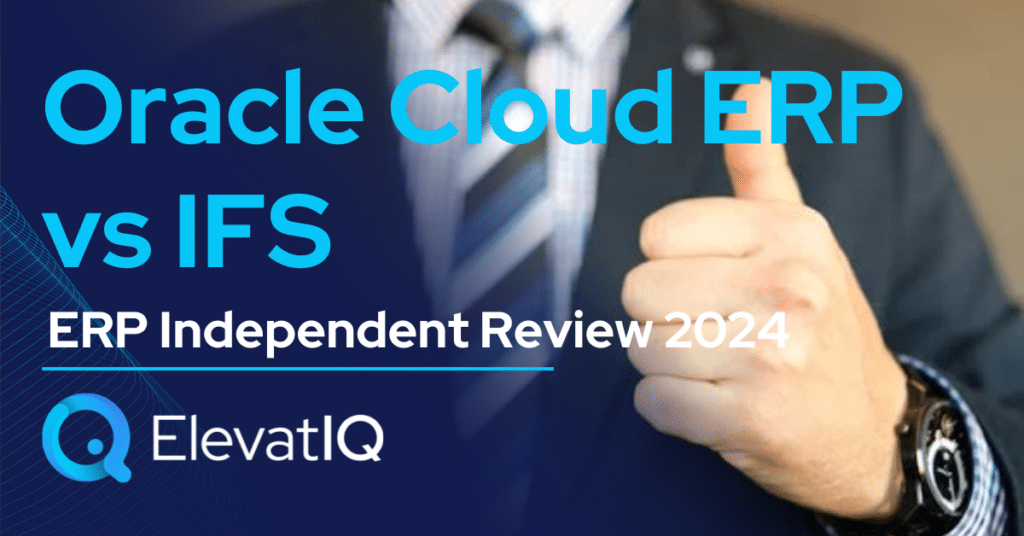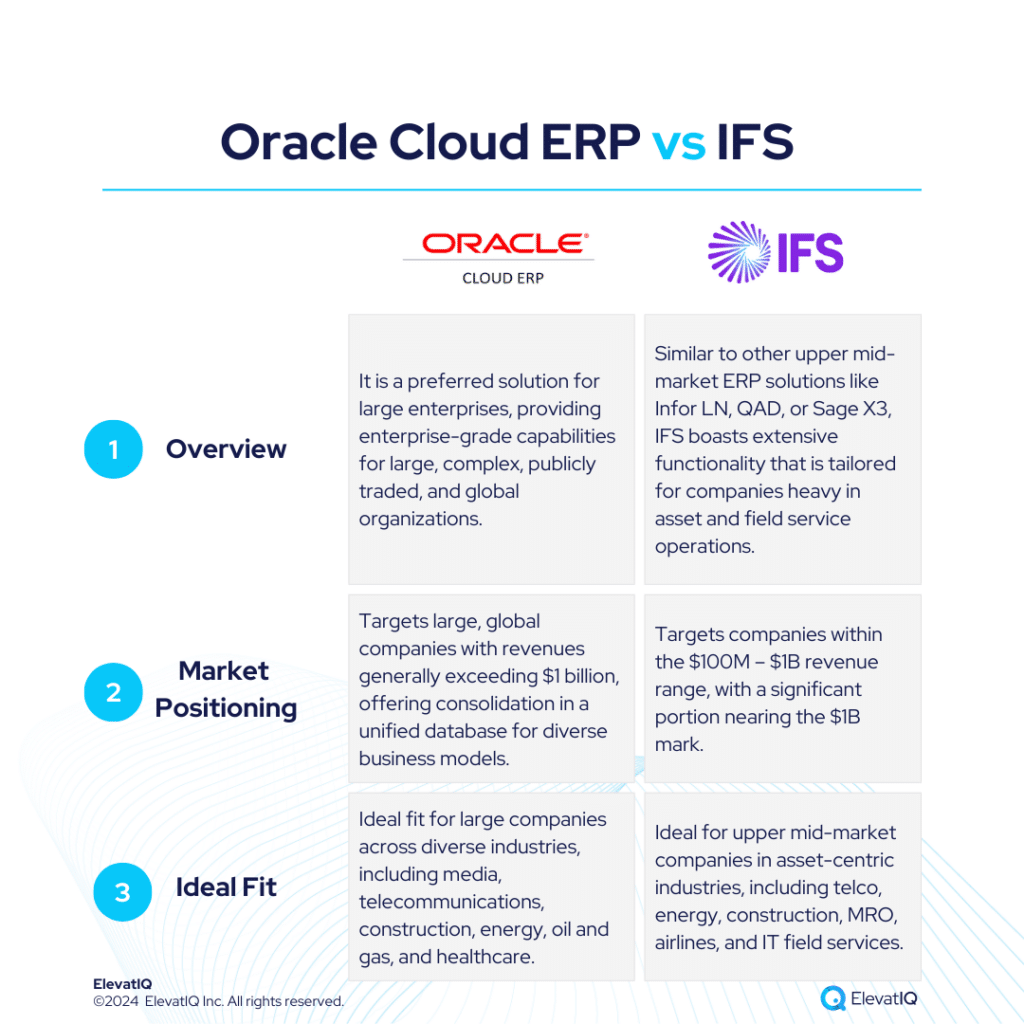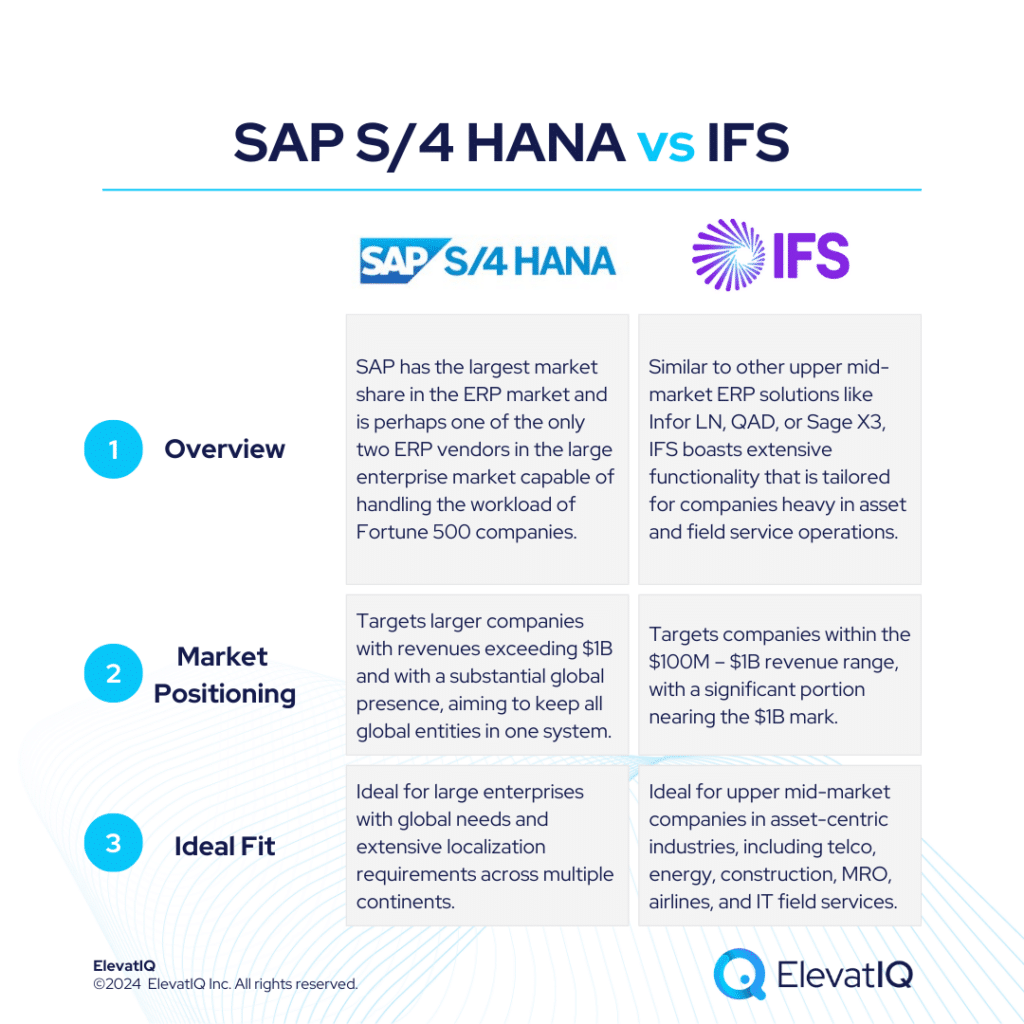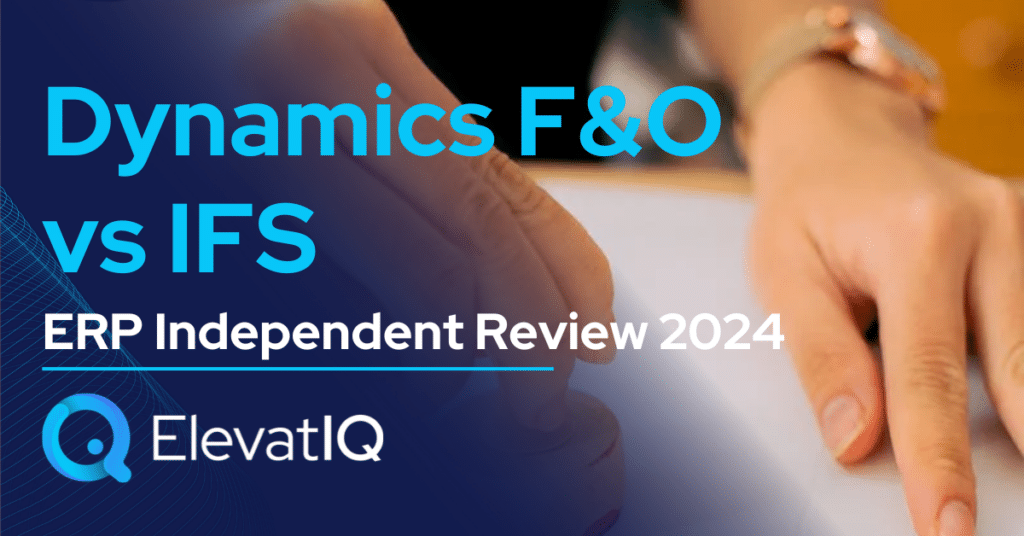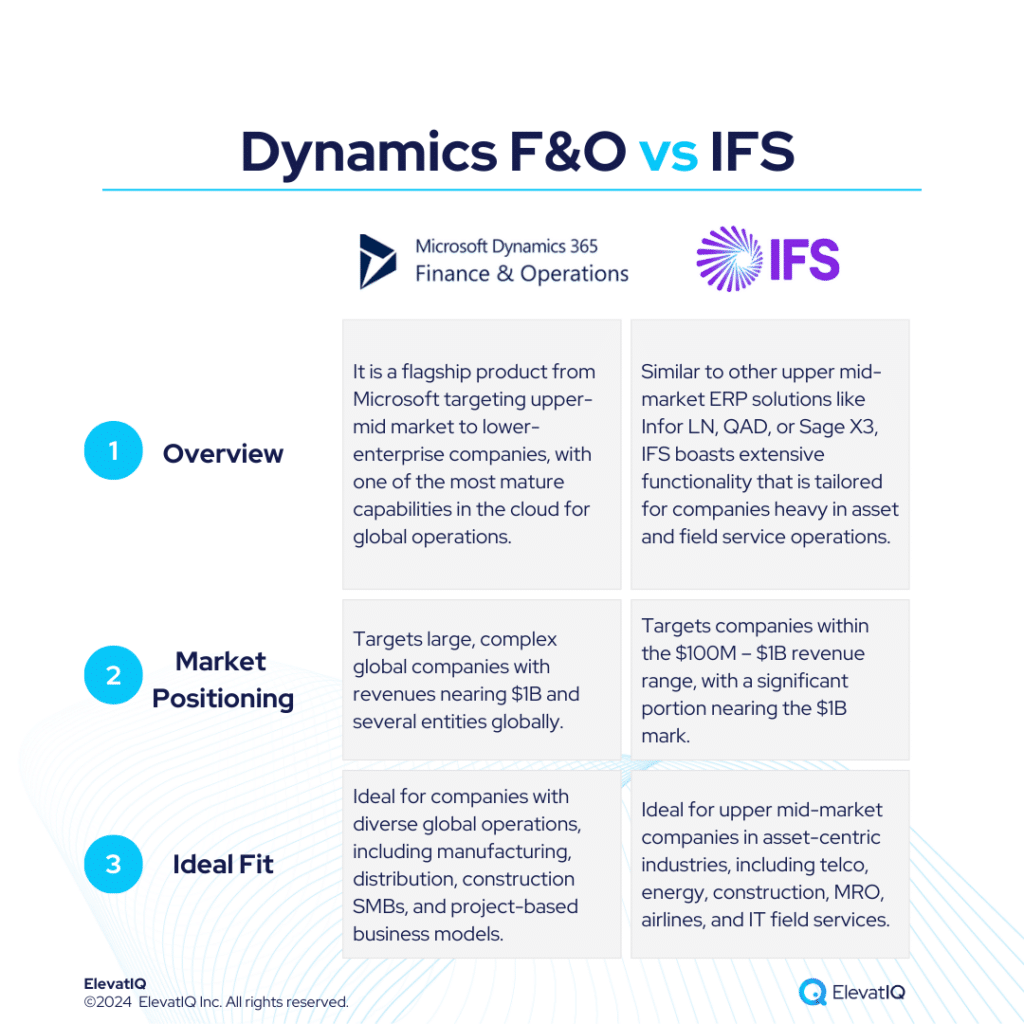Dynamics F&O vs Odoo ERP Independnent Review 2024
Microsoft Dynamics 365 F&O stands out particularly for its enhanced cloud-native functionality, leading in capabilities over competitors like SAP S/4 HANA and Oracle Cloud ERP. It caters to large, global companies with complex business models, offering mature technology and also a successful track record across industries. On the other hand, Odoo caters to smaller companies transitioning from QuickBooks or Xero, streamlining operations from various add-ons, spreadsheets, and applications. Dynamics F&O targets particularly large, complex global companies with revenues nearing $1B and several entities globally. Whereas, Odoo primarily caters to startups and smaller companies with revenue under $10 million.
Dynamics 365 F&O is ideal for companies with diverse global entities, particularly industries like manufacturing, distribution, and construction. On the other hand, Odoo’s unique advantage lies in hosting operations across multiple countries in a single database. Distinguishing from solutions like QuickBooks or Xero, it might also use separate financial instances for each country. The other similar ERP systems designed for multi-entity operations might not contain CRM-specific processes.
However, navigating the Dynamics 365 ecosystem may require assistance due to the presence of unqualified partners. Despite some technical issues, Dynamics 365 F&O remains a solid choice for companies of varying sizes and models. On the other hand, Odoo is an excellent choice for budget-conscious companies, especially those with in-house development teams. Therefore, choosing between Dynamics F&O vs Odoo requires a detailed examination, and this comparison offers valuable insights for ERP selection projects. Let’s delve deeper into the specifics.
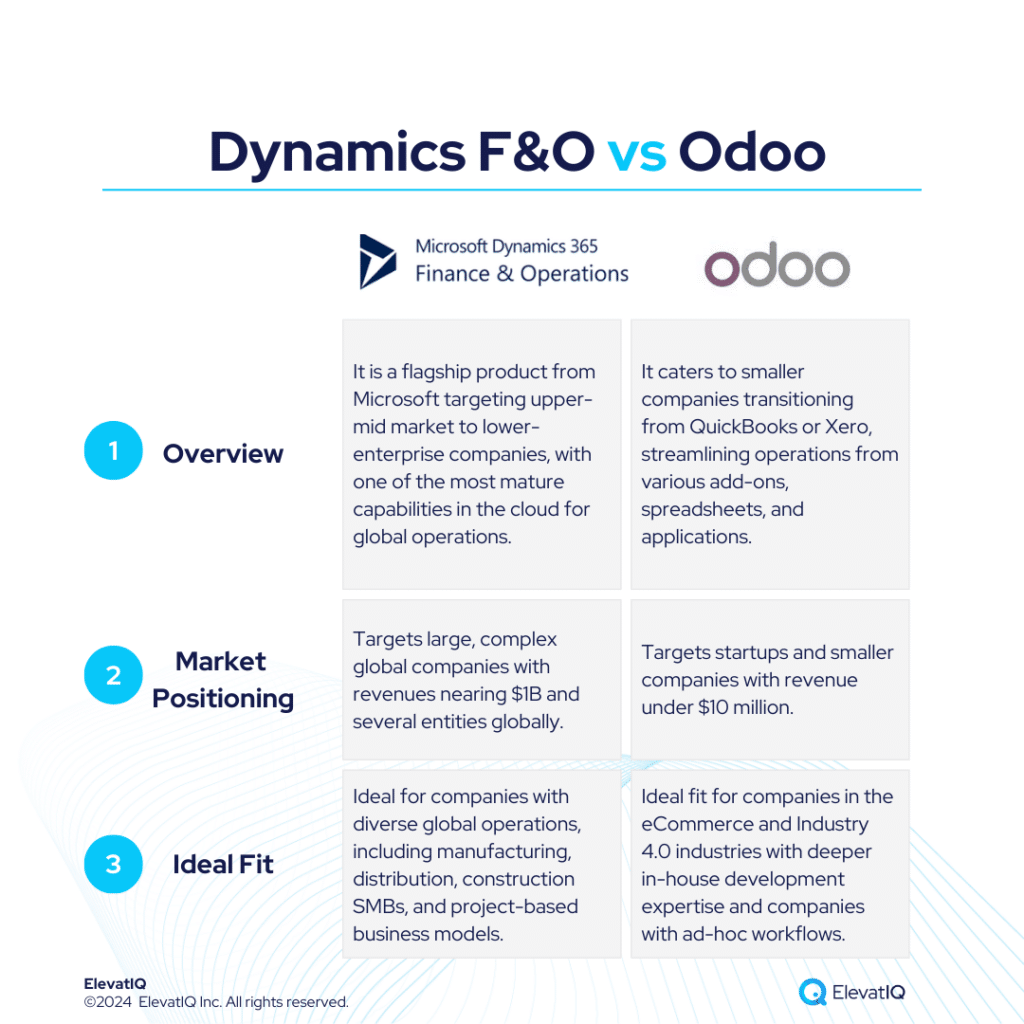

| MS Dynamics 365 F&O | Odoo | |
| Started in | One of the most established enterprise software companies in the world | 2014 |
| Ownership by | Microsoft | Odoo S.A. |
| No. of customers | 50,000+ | 100,000+ relatively smaller companies |
What is Microsoft Dynamics 365 Finance & Operations (F&O)?
Microsoft Dynamics 365 F&O is often the third choice for larger global accounts, following SAP S/4 HANA and Oracle Cloud ERP. It offers a mature ecosystem with modern, cloud-native technologies, thus proving successful across various industries. It is perhaps the most diverse solution accommodating several global business models in one database, making it an ideal solution particularly for lower enterprise companies. While a great fit as a corporate ledger for large enterprises, it’s not as proven as other leading solutions in the enterprise market with workloads as high as millions of journal entries per hour that Fortune 1000 companies might demand.
Microsoft Dynamics 365 F&O also excels in localizations where other solutions may falter. A vibrant ecosystem makes it suitable for private equity and also holding companies aiming to streamline their portfolio companies on one solution. SMBs, however, might find its complex data model overwhelming. Large, complex global companies with revenues exceeding $1B will particularly find Microsoft Dynamics 365 F&O appealing.
Although Microsoft Dynamics 365 F&O lacks the operational depth of specialized solutions, larger companies favor its corporate-level financial control. In a two-tier setting, they often particularly utilize additional Dynamics 365 F&O add-ons like Adeaca for operational requirements. Furthermore, Dynamics F&O offers seamless integration for field service, HCM, and CRM at the database level, empowering large companies to construct a best-of-breed architecture. It is especially strong with WBS-centric processes covering operational and financial schedules equally well. Hence, the challenge with MS Dynamics F&O would be the best-of-breed ancillary systems critical for A&D systems, which are not owned and maintained by Microsoft, requiring third-party add-ons.
What Is Odoo?
Odoo caters to particularly smaller companies transitioning from QuickBooks or Xero, streamlining operations from various add-ons, spreadsheets, and applications. It provides basic transactional processing across several enterprise software categories, such as ERP, CRM, and HCM. And a lot more in a consolidated database, thus eliminating the need for costly integrations.
An excellent choice for budget-conscious companies, especially those with in-house development teams, Odoo may face challenges without guidance from experienced ERP consultants. While Odoo’s modular design allows flexible app purchasing and provides scalability, it lacks tight integration at the data model level. This limitation can be a concern for companies aiming for stringent financial control at the data layer. This is especially true for less seasoned companies that might already struggle to regulate their internal process and data codings.
A rapidly growing platform with substantial funding and a large user base, it particularly caters to startups and smaller companies with revenue under $10 million. Also, its unique advantage lies in hosting operations across multiple countries in a single database. Distinguishing from solutions like QuickBooks or Xero, it might use separate financial instances for each country. The other similar ERP systems designed particularly for multi-entity operations might not contain CRM-specific processes.
Dynamics F&O vs Odoo Comparison
Navigating the choice between Dynamics F&O vs Odoo is a significant decision for businesses particularly looking for operational efficiency and strategic alignment. Thus, this section delves into the comprehensive comparison of Dynamics F&O vs Odoo across various critical dimensions.
| MS Dynamics 365 F&O | Odoo | |
| Global Operational Capabilities | Can host multiple entities from different countries. | Fit for smaller companies that might have entities in many different countries. |
| Diverse Capabilities | Can accommodate most business models, may require add-ons. | The data and process model supports diverse industries, including product and service-centric startups. |
| Best-of-breed Capabilities | Crucial capabilities such as PLM, etc, may not be pre-integrated. | Extremely limited best-of-breed capabilities compared to its larger peers. |
| Last-mile Capabilities | May require add-ons for specific micro-verticals. | The last-mile capabilities for specific micro-verticals are limited. |
| Operational Functionalities | Rich operational functionality for large enterprises. | Matrix functionality built as part of the inventory core. Also, maintains a cohesive design across screens and modules being a cloud-product. |
| Integration Capabilities | Pre-integrated with CRM and field service. | It lacks tight integration at the data model level. This limitation can be a concern for companies aiming for stringent financial control at the data layer. |
| Manufacturing Capabilities | Mature capabilities support diverse models. | Matrix functionality built as part of the inventory core. However, many advanced transactions may have limited support natively. |
| Pricing Model | Cost per user per month with flexible user management, without long-term commitment. | Per-user, per-app, per-month model |
| Key Modules | 1. Financial Management 2. Supply Chain Management 3. Manufacturing Management 4. Human Capital Management 5. Business Intelligence and Reporting 6. Security and Compliance 7. Develop and Customize 8. System Administration | 1. Sales 2. CRM 3. Inventory Management 4. Accounting and Finance 5. Purchase Management 6. Project Management 7. Manufacturing Management 8. Human Resources Management 9. Website and eCommerce |
Dynamics F&O vs Odoo Feature Comparison
Both platforms offer a plethora of features and functionalities designed to streamline business operations and enhance efficiency. In this feature comparison, we delve into particularly the distinct capabilities of Dynamics F&O vs Odoo across various critical dimensions, providing insights to aid businesses in making informed decisions regarding their ERP selection. Thus, this section discusses features under each of the following modules, particularly financial management, supply chain management, and manufacturing management.
Financial Management Comparison
In this section, we are discussing a detailed comparison of the financial management capabilities particularly offered by Dynamics F&O vs Odoo. By examining their respective strengths and functionalities, particularly in managing financial processes. Businesses can therefore gain valuable insights to determine the best-suited ERP solution for their financial management needs.
| MS Dynamics 365 F&O | Odoo | ||
| Financial Management | General Ledger | Creates and maintains accurate records for financial transactions and generates regular financial reports. | A financial record-keeping system that tracks all financial transactions and integrates seamlessly with other modules. |
| Accounts Receivable and Accounts Payable | Automates workflows for managing vendor invoices, payments, and customer invoicing, streamlining the entire invoicing process and improving cash flow management. | The AR tracks money owed to the business by customers, while AP manages money the business owes to suppliers. | |
| Cash Flow Management | Provides comprehensive cash flow forecasting capabilities, allowing to project future cash positions, identify potential shortfalls, and make informed decisions. | Helps monitor and forecast company’s cash inflows and outflows to ensure liquidity and financial stability. | |
| Other Features | Chart of Accounts -Enables the creation of a hierarchical structure for categorizing financial information. | Currency Management – Supports multi-currency transactions, automatic exchange rate updates, exchange difference entries, foreign currency reports, and managing bank accounts in multiple currencies. | |
| Budgeting and Forecasting – Creates and manages budgets across different departments and business units. Also, leverages historical data and predictive analytics, to make accurate projections and align their financial strategies with business goals. | Tax Management – Automates tax calculations, updates, and reporting, ensuring compliance and efficiency across multiple currencies and modules. |
Supply Chain Management Comparison
In this comparison, we explore and analyze the supply chain management capabilities of Dynamics F&O vs Odoo, shedding light particularly on their respective strengths and weaknesses.
| MS Dynamics 365 F&O | Odoo | ||
| Supply Chain Management | Warehouse Management | Provides advanced warehouse and transportation management features, including inventory tracking, order fulfillment, shipment planning, and real-time visibility into logistics operations. | Optimizes inventory control, streamlines operations, and enhances visibility with real-time tracking and automated processes. |
| Service Management | Establishes service agreements and service subscriptions, handles service orders and customer inquiries, and manages and analyzes the delivery of services to customers. | Streamlines service delivery, enhances customer satisfaction, and optimizes resource allocation with integrated project management and invoicing. | |
| Inventory Management | Offers real-time visibility into inventory levels, demand, and supply, enabling organizations to optimize their inventory planning, reduce stockouts, and improve customer satisfaction. | Offers real-time tracking, multi-location management, and automated reordering to optimize stock levels and streamline operation. | |
| Other Features | Procurement and Sourcing – Streamlines the procurement process by providing end-to-end visibility and control over purchasing activities. Also automates and optimizes the procurement workflows, reducing costs and improving supplier relationships. | Purchase Order Management – Automates procurement processes, optimizes supplier interactions, and ensures accurate order tracking and invoicing. | |
| Transportation Management – Offers real-time visibility into logistics operations. | Sales Order Management – Streamlines the entire sales process, from creating and sending quotations to converting them into sales orders and managing invoicing, all within a single platform. | ||
| Demand Planning and Forecasting – Generates accurate demand forecasts, helping organizations optimize production planning, inventory levels, and procurement decisions. | Requisition Management – Streamlines the process of creating, reviewing, and approving purchase requisitions, ensuring compliance with budgets and procurement policies |
Manufacturing Management Comparison
In this comparison, we explore and analyze the manufacturing management capabilities of Dynamics F&O vs Odoo, shedding light, particularly on their respective strengths and weaknesses.
| MS Dynamics 365 F&O | Odoo | ||
| Manufacturing Management | Production Planning | Provides comprehensive production planning and control capabilities, allowing organizations to optimize their manufacturing processes. The system supports various production scenarios, including make-to-order, make-to-stock, and engineer-to-order, while providing real-time visibility into production schedules, resource allocation, and material requirements. | Optimizes manufacturing processes by efficiently scheduling, allocating resources, and managing work orders to meet production goals. |
| Other Features | Shop Floor Management – Offers real-time monitoring of shop floor activities, capturing data on machine utilization, labor productivity, and production progress. | BOM and Routing – Defines the components and operations required for manufacturing a product, optimizing production efficiency. | |
| Product Lifecycle Management – Enables organizations to manage the entire product lifecycle, from design and engineering to manufacturing and after-sales service. The system integrates product data, engineering change orders, and quality management processes, ensuring seamless collaboration and visibility across different departments. | Advanced Planning and Scheduling – Optimizes production by centralizing data, providing real-time visibility, and automating scheduling to enhance efficiency. |
Pros of Dynamics F&O vs Odoo
When evaluating ERP solutions, understanding the distinct advantages of Dynamics F&O vs Odoo is crucial. In this section, we are particularly exploring the strengths of Dynamics F&O vs Odoo across various dimensions. Thus, shedding light on their respective capabilities and functionalities.
| MS Dynamics 365 F&O | Odoo |
| Has a significant advantage in its extensive consulting base and a vibrant marketplace, a unique benefit unmatched by many ERP systems. | It is widely adopted, especially among Industry 4.0 companies and other machinery businesses. |
| Supports global operations and business models and pre-baked integration for the best-of-breed CRM and field service solutions. | It can support many different business models, many different localizations, countries, etc, as part of the same product. |
| Embedded WMS and TMS processes help companies that might require end-to-end traceability even after the good leaves the dock. | The availability of cheaper technical talent globally helps product-centric startups extend or augment core capabilities. |
| Legacy product rearchitected for the cloud. So, while better than other legacy products that might be behind in the cloud. | The lean data model and workflows make it easier for product-centric startups transitioning from QuickBooks-like solutions. |
Cons of Dynamics F&O vs Odoo
Just like recognizing strengths is important, it’s also crucial to weigh the specific drawbacks of Dynamics F&O vs Odoo. Therefore, in this section, we will delve into the limitations and challenges associated with Dynamics F&O vs Odoo across various operational and financial dimensions.
| MS Dynamics 365 F&O | Odoo |
| Overwhelming for smaller companies with the configuration and approval flows built for large enterprises. | The open-source nature leads to a tendency to over-customize, resulting in an inferior product experience. |
| Might not be able to match the performance expectations of larger organizations where processing millions of journal entries per hour is required. | Consisting primarily of developers, the ecosystem particularly doesn’t have a seasoned program, change management, and business consultants. |
| Overbloated financial control processes, such as compliance, allocation, and approval flows, which are only necessary for large organizations. | The last-mile capabilities for specific micro-verticals are limited, requiring significant customization for their work with specific industries. |
| May require consulting assistance to navigate the channel, given the presence of unqualified ISVs and VARs. | Mature capabilities such as MRP, allocation, and batch are not as detailed as with other richer ERP systems. |
| Integration with A&D-specific PLMs, configurators, and CPQ systems is not out-of-the-box, increasing the implementation time and costs. | Adoption in the apparel manufacturing space, which is more complex, may not be as widespread. |
| The last-mile capabilities for specific A&D verticals, such as integration with GovCon processes and databases, may require solutions from third parties or custom integration, making the implementation overly expensive. | To tailor, customize, and configure these capabilities—already included in the suite, Odoo requires a very mature internal IT team. |
Conclusion
In conclusion, choosing between Dynamics F&O vs Odoo largely depends on a company’s size, complexity, and budget. Dynamics F&O is particularly tailored for large enterprises with complex global operations, offering a robust, cloud-native solution that excels in financial control, manufacturing, and supply chain management. It integrates seamlessly with CRM, HCM, and also other core functions, making it ideal for companies requiring sophisticated global capabilities. However, its complexity and need for additional third-party add-ons might make it overwhelming for smaller businesses.
On the other hand, Odoo is designed for startups and smaller companies, offering flexibility, scalability, and a modular design that allows organizations to pick and choose functionalities as needed. While it may lack the deep integration and advanced capabilities of Dynamics F&O, it is an excellent choice for companies with in-house development teams looking for a cost-effective solution.
Both systems have their strengths and limitations, so businesses should carefully evaluate their specific need. Also, seeking assistance from an independent ERP consultant can significantly aid the decision-making process. To get a 360-degree view of feature comparisons, it’s essential to explore not only Dynamics F&O vs. Odoo but also insights from other analyses such as Dynamics F&O vs. NetSuite, SAP S/4 HANA, Oracle Cloud ERP, Acumatica, Dynamics 365 BC, Infor LN, Infor M3, Epicor Kinetic, and IFS.

FAQs
Dynamics F&O vs Odoo ERP Independnent Review 2024 Read More »

